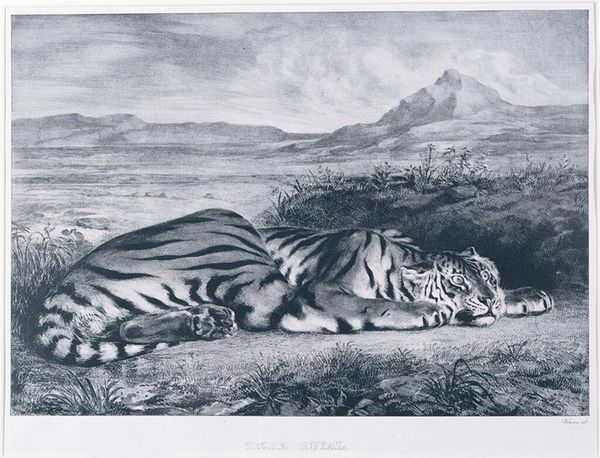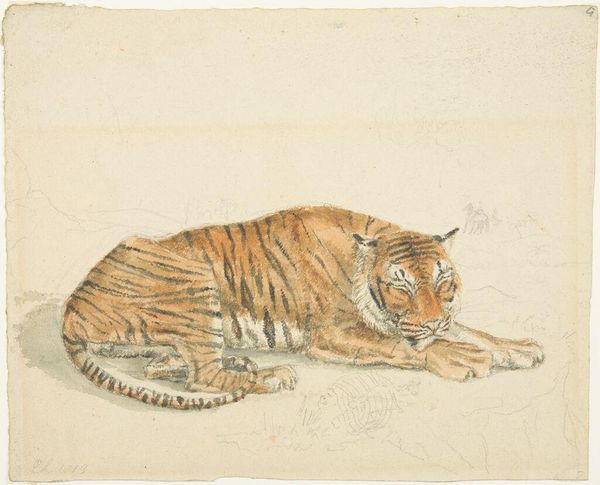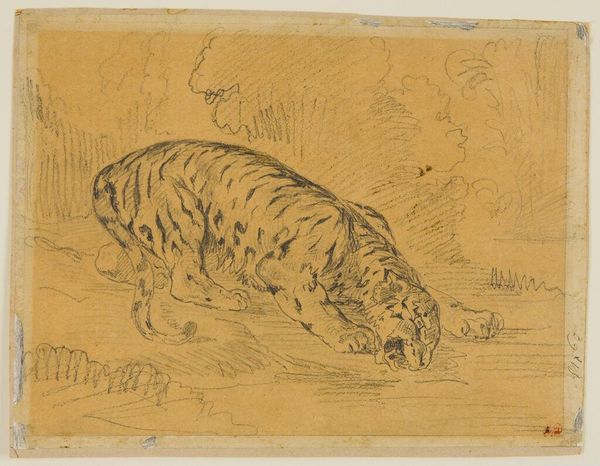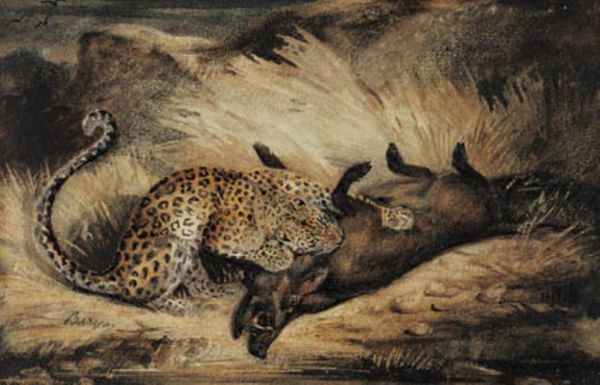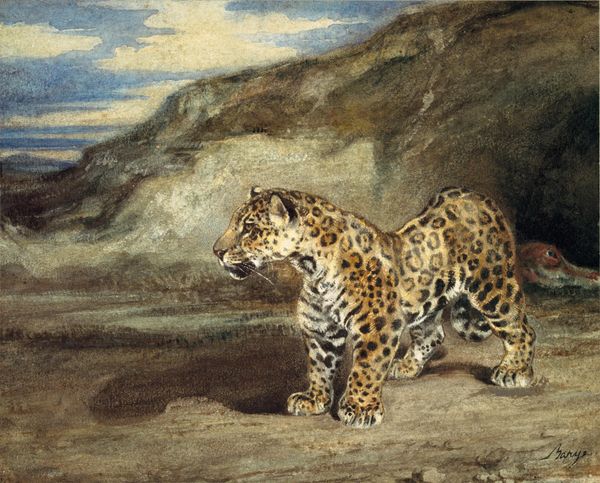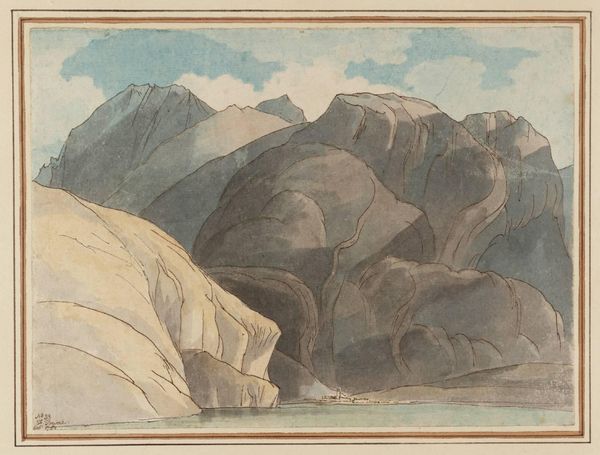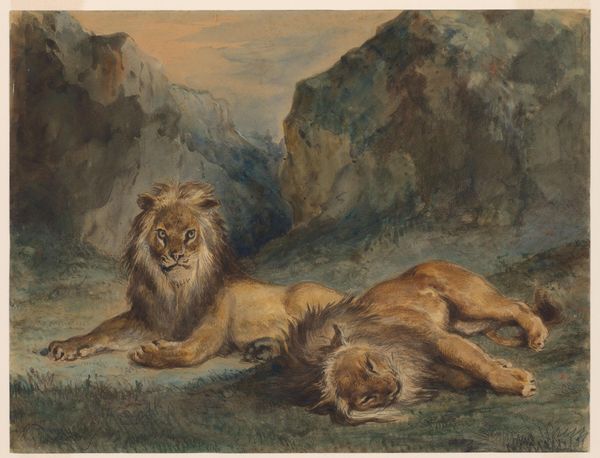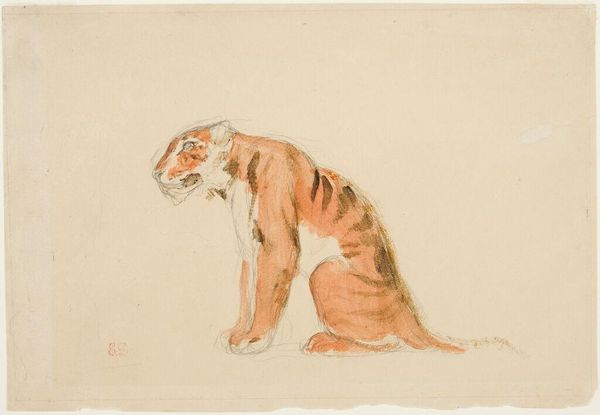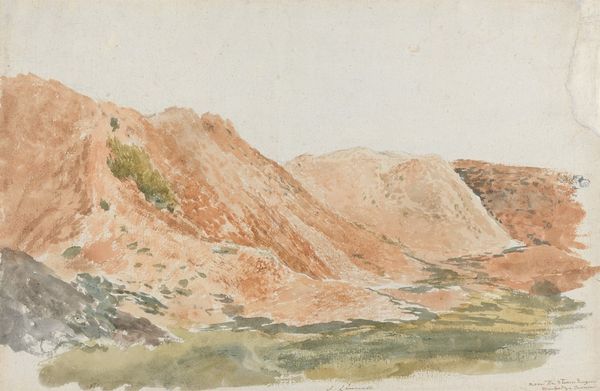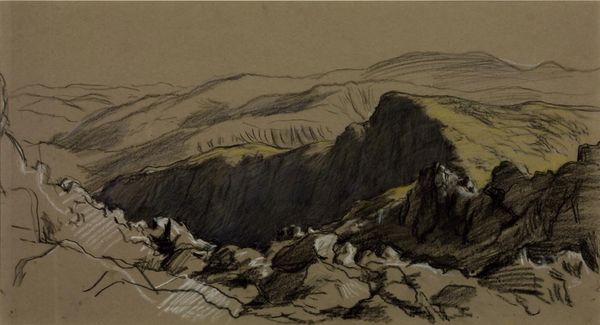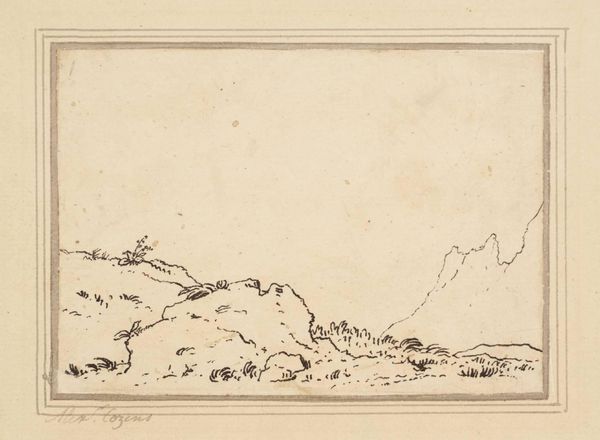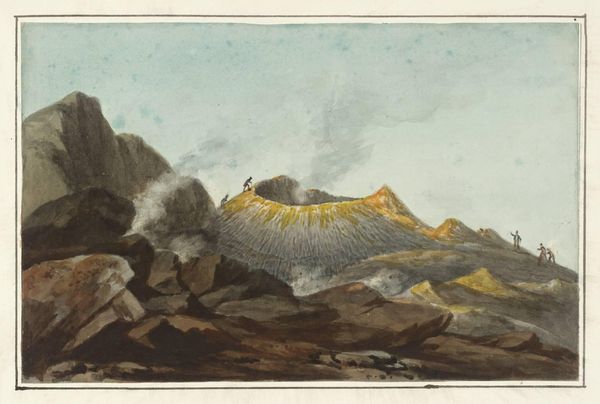
painting, watercolor
#
animal
#
painting
#
landscape
#
figuration
#
oil painting
#
watercolor
#
romanticism
#
watercolour illustration
#
watercolor
Dimensions: 14.1 x 25 cm
Copyright: Public domain
Curator: Here we have Eugène Delacroix's "Tiger," created around 1830. It appears to be a watercolor on paper. What’s your first reaction to it? Editor: There’s a stillness, a kind of melancholy that emanates from this resting tiger. The muted colors contribute to a subdued, almost passive feeling despite the potent imagery. Curator: Delacroix painted this during a period when Romanticism heavily influenced art. He sought to portray raw emotion and the power of nature, especially the exotic and untamed. Images like this often reinforced colonial narratives about taming the “wild.” Editor: So the act of portraying this powerful animal in such a placid state potentially served to promote a sense of human control over the natural world. How was the image originally received? Curator: Images like this entered into popular culture in very interesting ways. Prints of animals became a way to show natural history, an extension of colonial collection and ownership over natural species that have always been represented as colonial encounters in a space such as this one. Editor: It's quite a contrast, that delicate medium capturing something so ferocious. The choice of watercolor, typically associated with landscapes or portraiture, gives the tiger a sense of vulnerability, even domesticity, contrasting its true nature. How does that align with our current views on wildlife conservation? Curator: Precisely, and today, in our examination of this piece, we're better equipped to reflect on this dynamic, questioning the historical narrative embedded in the artwork. What once may have signaled dominion, we now interpret through lenses of respect, species conservation, and an awareness of interconnected ecosystems. Editor: Viewing this with contemporary sensibilities certainly changes the dialogue. Thank you. Curator: It's been a pleasure exchanging perspectives on Delacroix's tiger.
Comments
No comments
Be the first to comment and join the conversation on the ultimate creative platform.
